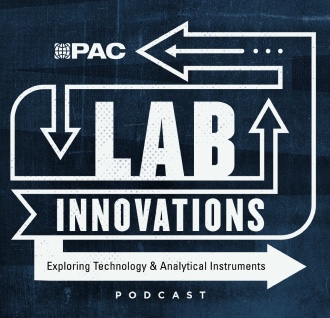May-2022
Chromalox medium voltage DirectConnect electrical system
The drive to shift from fossil fuel-fired equipment to alternative forms of energy is a global trend aimed at minimising carbon emissions. Many process heating techniques require temperatures greater than 1,100ºC (2,000ºF) to perform effectively, while nearly half of industrial process heating (IPH) is used for low to medium temperature processes at or below 400ºC (750ºF) – processes that could easily shift from oil, natural gas, and coal to electricity.
James Lewis
Chromalox
Viewed : 1743
Article Summary
Reduce carbon emissions with a medium voltage electrical system
The drive to shift from fossil fuel-fired equipment to alternative forms of energy is a global trend aimed at minimising carbon emissions. Many process heating techniques require temperatures greater than 1,100ºC (2,000ºF) to perform effectively, while nearly half of industrial process heating (IPH) is used for low to medium temperature processes at or below 400ºC (750ºF) – processes that could easily shift from oil, natural gas, and coal to electricity.
Electric resistance steam generation vs fuel-fired steam generation
Minimising an industrial facility’s carbon footprint means shifting from fuel-fired systems used to generate electricity and steam to electrically powered steam generation, while relying on alternative forms of energy to supply electricity. Gas and oil-based systems are continually utilised for their apparent abundance, cost-effectiveness, technological maturity, and established infrastructure. However, many consumers are only looking at the upfront costs associated with leveraging fuel-fired systems and not the long-term economics and carbon footprint impact.
Thermal conversion and operational efficiency
Burner systems do not convert to heat energy as efficiently as electric heaters that operate well over 95% efficiency; this is because heat is lost through the exhaust. Gas-fired heating systems are typically oversized for the heat demand duty to account for these losses. Start-up, turn-down, and shutdown are all processes that take time and reduce operational efficiency. In some cases, facilities will install multiple boilers at reduced capacity to compensate for the significant loss in efficiency at low loads. This is not the case for electric heating; the silicon-controlled rectifier (SCR) is able to respond to dynamic loads with a rapid heat response time and improve overall energy usage and efficiency.
System complexity and upkeep
These systems are inherently more complex than their electric resistance heating counterparts, opening more avenues for failures. Burners require an ideal oxygen mixture that must be regulated properly to operate efficiently, but achieving stoichiometric combustion is unrealistic such that excess levels of air must be introduced to ensure complete combustion. This excess air is counter-productive by directing heat straight to the flue stack. However, it is a necessary evil since the exhaust temperature must be maintained above dew points to prevent the formation of corrosive mixtures, which can degrade equipment at an accelerated rate. Internally, the firetubes can be coated with soot, resulting in lower thermal efficiency. The upkeep for these systems is extensive because of the complexity of the design — burners, fans, fuel mixtures, exhaust stack temperature, scale build-up, and pollution treatment. Where a fuel-fired steam boiler or any other fossil fuel-based IPH operates properly with a predictable maintenance schedule, the proper inspection takes weeks with highly experienced technicians and specialised tools. This means production downtime, the most significant cost to industrial facilities. In cases where there are unexpected failures, plant shutdown can take even longer, contributing to even more opportunity cost.
Electric systems are straightforward by design and easily scalable. A resistance wire passes the current and generates heat where an insulator and container protect the wire, and a cold pin and termination allow for power to be passed through the wire. There are no parasitic losses as there is no combustion, and highly efficient operation can occur without issue. Maintenance includes a blowdown vessel, inspecting electrical connections and ensuring there are no water or steam leaks. Annual maintenance involves pulling out the element to clean — a process that can be done in a few hours. For maintenance and downtime reasons alone, industrial facilities that want to minimise their capital expenditures (Capex) and operational expenditures (Opex) should consider making the switch.
Reducing carbon emissions and improved efficiency with DirectConnect medium voltage for industrial electrification
Electric resistance heating elements have been utilised within the industry for over a century due to their simple but effective design methodology. Chromalox has pioneered the medium voltage DirectConnect electrical system designed for rated voltages up to 7,200 V AC.
Most electric resistance heating elements are low voltage (up to 1,000 VAC), requiring a step-down transformer and heavy amperage cable to operate within an industrial facility. For a plant looking to scale up its electrical IPH, it would previously have had to lean on more low voltage equipment, meaning more circuits, conduit, power wiring, and steam plumbing. The DirectConnect medium voltage system eliminates the need for a step-down transformer, connecting directly to the site’s voltage with higher operational efficiency. There is also far less installation with a lower component count, making this system both cheaper and more scalable, as shown in Figure 2. This way, larger IPH functions can also switch over to electric resistance heating to decarbonise.
Sponsor:
Categories:
Add your rating:
Current Rating: 3

















